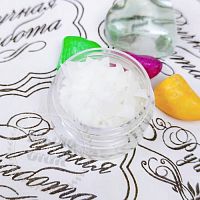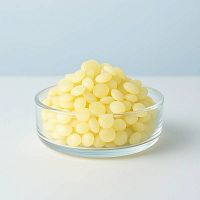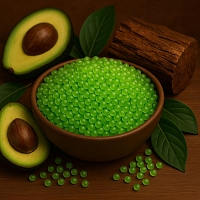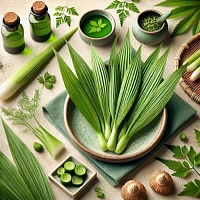-
 Absolutes
Absolutes
-
 Active Complexes
Active Complexes
-
 Actives and Peptides for Cosmetics
Actives and Peptides for Cosmetics
-
 Amino Acids
Amino Acids
-
 Food Flavorings
Food Flavorings
-
 Ayurveda
Ayurveda
-
 Vitamins
Vitamins
-
 Gelling Agents and Thickeners
Gelling Agents and Thickeners
-
 Hydrosols and Floral Waters
Hydrosols and Floral Waters
-
 Hydrolyzed Proteins
Hydrolyzed Proteins
-
 Fragrant and aromatic substances
Fragrant and aromatic substances
-
 Acids, Salts, Alcohols, and Alkalis
Acids, Salts, Alcohols, and Alkalis
-
 Preservatives and Antioxidants
Preservatives and Antioxidants
-
 Cosmetic Raw Materials
Cosmetic Raw Materials
-
 Dyes, Pearlescents, and Glitters
Dyes, Pearlescents, and Glitters
-
 Face Masks, Scrubs, and Dried Flowers
Face Masks, Scrubs, and Dried Flowers
-
 Oils, batters, macerates, oil mixtures
Oils, batters, macerates, oil mixtures
-
 Candle Supplies
Candle Supplies
-
 Melt and Pour Soap Bases
Melt and Pour Soap Bases
-
 Base for cosmetics, cream, serum, shampoo
Base for cosmetics, cream, serum, shampoo
-
 Fragrance Oils
Fragrance Oils
-
 Surfactants
Surfactants
-
 Peelings for Skin
Peelings for Skin
-
 Herbal Powders and Plant
Herbal Powders and Plant
-
 Silicones and Conditioning Surfactants for Hair
Silicones and Conditioning Surfactants for Hair
-
 Raw materials for dietary supplements
Raw materials for dietary supplements
-
 Packaging for Cosmetics and Perfumes
Packaging for Cosmetics and Perfumes
-
 Molds, Packaging, Tools
Molds, Packaging, Tools
-
 Organic Extracts
Organic Extracts
-
 Emollients for Cosmetics
Emollients for Cosmetics
-
 Emulsifiers
Emulsifiers
-
 Essential Oils
Essential Oils
Lemon Wax: The Natural Emollient for Premium Formulations
Introducing our Lemon Wax, a premium 100% organic ingredient meticulously crafted in Germany. This versatile white wax, available in granules/flakes, is derived from vegetable/lemon oil and fortified with Vitamin E (INCI: Vegetable/Lemon Oil, Vitamin E). With a melting point of 60°C and excellent oil solubility, Lemon Wax is an indispensable addition to a wide array of cosmetic, personal care, and aromatherapy products. Its odorless nature ensures it won't interfere with your desired fragrance profiles, making it a truly adaptable component for global sales.
Description and Key Characteristics
Lemon Wax is a sophisticated, plant-derived wax that offers a multitude of benefits for product formulations. It acts as a natural emollient, thickener, stabilizer, and film-former, enhancing the texture, feel, and performance of various applications. Unlike synthetic waxes, our Lemon Wax provides a silky, non-greasy feel, leaving skin feeling soft and protected.
Key features and benefits:
-
100% Organic Quality: Sourced and processed to the highest organic standards, ensuring a pure and environmentally friendly ingredient.
-
Emollient and Conditioning: Provides exceptional skin conditioning, creating a smooth, soft feel without a heavy residue. It forms a protective barrier that helps to retain moisture.
-
Thickening and Stabilizing Agent: Effectively increases viscosity and improves the stability of emulsions, preventing separation and enhancing product texture.
-
Film-Forming Properties: Creates a subtle, protective film on the skin or hair, offering a layer of defense against environmental stressors and improving product longevity on the applied surface.
-
Odorless: Its neutral scent profile makes it ideal for fragrance-sensitive formulations, allowing the true aroma of essential oils or other fragrance components to shine through.
-
Versatile Texture: Available in convenient granules or flakes, ensuring easy handling and integration into your manufacturing process.
-
Melting Point 60°C: A stable melting point that makes it suitable for formulations requiring heat, such as solid balms and stick deodorants.
-
Oil Soluble: Readily dissolves in oil phases, making it compatible with a wide range of oil-based and emulsified products.
Application Varieties and Areas of Use
Lemon Wax is a highly versatile ingredient, offering superior performance across numerous product categories. Its unique properties make it an excellent choice for formulators seeking natural alternatives to synthetic waxes.
-
Cosmetic Production:
-
Whitening Emulsions (1-2%): Enhances stability and provides a luxurious feel in creams designed to even skin tone.
-
Deodorant Sticks (1-2%): Offers structural integrity, a smooth glide, and a pleasant skin feel for solid deodorant formulations.
-
Hair Straightening Products (0.25-1%): Helps to control frizz, provide hold, and add a subtle shine without weighing down the hair.
-
Massage Bars and Soaps (0.5-3%): Contributes to the firmness of massage bars and provides a creamy, conditioning lather in soap formulations.
-
Lipstick and Lip Balm (3%): Imparts structure, improves pay-off, and enhances the emollient properties of lip products, providing a smooth application and long-lasting comfort.
-
Epilation Wax (3%): Can be incorporated into waxing formulations to improve consistency and grip, leading to more effective hair removal.
-
Solid Perfumes (2-4%): Acts as a perfect base for solid perfumes, offering a smooth, non-greasy texture that melts beautifully on the skin, allowing the fragrance to subtly bloom.
-
Aromatherapy Candles (2-4%): Improves the burn time and scent throw of candles, creating a cleaner burn and a more consistent release of fragrance.
-
-
Other Applications (where applicable by local regulations and formulation expertise):
-
Food Additives: While primarily for cosmetic use, the "Vegetable/Lemon Oil" component may suggest potential for food-grade applications, but this would require specific certifications and expert evaluation based on the full composition.
-
Pharmaceuticals/Medicine: Could be used in topical pharmaceutical creams or ointments as an excipient for its emollient and thickening properties, provided it meets pharmaceutical grade standards.
-
Aromatherapy: Beyond candles and solid perfumes, its neutral scent and emollient properties make it a suitable base for various aromatherapy balms or salves.
-
Dietary Supplements (BADs): Similar to food additives, any internal use would require stringent testing and regulatory compliance.
-
The broad range of suggested usage percentages (from 0.25% to 100% in certain applications like massage bars or solid perfumes) highlights its adaptability, allowing formulators to achieve desired textures and performance levels. Its oil solubility means it should be incorporated into the heated oil phase of your formulations.
Cosmetic Recipe: Nourishing Solid Lotion Bar
Create a luxurious, solid lotion bar that melts on contact with the skin, providing deep hydration and a protective barrier. Perfect for dry skin, this recipe highlights the emollient and structural benefits of Lemon Wax.
|
Ingredient |
Percentage (%) |
Function |
|
Phase A (Oils & Waxes) |
||
|
Shea Butter |
40% |
Deeply moisturizing, conditioning |
|
Cocoa Butter |
20% |
Rich emollient, provides firmness |
|
Lemon Wax |
15% |
Thickener, stabilizer, emollient, structure |
|
Jojoba Oil |
20% |
Lightweight, easily absorbed, emollient |
|
Phase B (Add after cooling) |
||
|
Vitamin E (Tocopherol) |
0.5% |
Antioxidant, preserves oils |
|
Essential Oil (e.g., Sweet Orange, Lavender) |
0.5% |
Fragrance, additional benefits |
Instructions for Preparing the Solid Lotion Bar:
-
Sanitize: Thoroughly sanitize all your equipment, including heat-proof containers, stirring utensils, and molds, with isopropyl alcohol. Allow them to air dry completely.
-
Combine Phase A: In a heat-proof container, combine the shea butter, cocoa butter, Lemon Wax, and jojoba oil.
-
Melt Phase A: Place the container in a double boiler (bain-marie) over low to medium heat. Gently heat until all the ingredients are completely melted and clear. Stir occasionally to facilitate even melting. The Lemon Wax will fully melt around 60°C.
-
Cool Slightly: Once fully melted, remove the container from the heat. Allow the mixture to cool slightly for a few minutes (to around 40-45°C), but ensure it remains liquid.
-
Add Phase B: Add the Vitamin E and your chosen essential oil (if using) to the slightly cooled mixture. Stir gently but thoroughly to ensure even dispersion.
-
Pour into Molds: Carefully pour the liquid mixture into your prepared molds (silicone molds for soap or candy work well, or small tins/jars).
-
Set: Allow the lotion bars to cool and solidify completely at room temperature. For faster setting, you can place them in the refrigerator for about 30-60 minutes, but avoid sudden drastic temperature changes.
-
Unmold and Store: Once fully solid, gently unmold the lotion bars. Store them in airtight containers, away from direct sunlight and heat, to preserve their freshness and texture.
Recommendations for Use:
-
Lemon Wax Percentage: The 15% inclusion of Lemon Wax in this recipe provides a firm yet meltable lotion bar. You can adjust this percentage slightly: increase for a firmer bar (up to 20%) or decrease for a softer bar (down to 10%), depending on your preference and the desired application.
-
Melting Point: Lemon Wax has a melting point of 60°C. Ensure your oil phase reaches this temperature for complete integration.
-
Oil Solubility: As Lemon Wax is oil-soluble, it should always be incorporated into the heated oil phase of your formulations.
-
Storage: Store finished lotion bars in a cool, dry place away from direct sunlight and heat. The natural ingredients have a shelf life of typically 6-12 months, depending on the freshness of your oils and the presence of Vitamin E as an antioxidant.
-
Application: To use, simply hold the bar in your hands or rub it directly onto your skin. Your body heat will gently melt a small amount of the bar, allowing you to massage the nourishing oils into your skin. Focus on dry areas like elbows, knees, and heels.
-
Patch Test: Always perform a patch test on a small area of skin before full application, especially if you have sensitive skin or are prone to allergies.
And also go to the Blog from Мыло Опт, where we share useful information about creating the right natural cosmetics
| INCI | Vegetable/Lemon Oil, Vitamin E | |
| Other | ||
| Color product | white | |
| Features | All information presented on the site is for reference only | |
| Input percentage | whitening emulsions, deodorant pencils - 1-2%, hair smoothing agent - 0.25-1%, massage tiles, soap - 0.5-3%, lipstick, balm, epilating wax - 3%, wax perfume , scented candle - 2-4% | |
| Melting temperature | 60 ° C | |
| Name | Lemon wax, 100 g | |
| Packaging | container for transportation | |
| Packing | 100 grams | |
| Solubility | fat soluble | |
| View | granules / flakes | |
| Valid until | 12.2026 | |
-
Date:todayAuthor:Ника, БроварыReviews
Завжди отримую від магазину корисні поради та рецепти. Дякую за вашу натхнення!
Date:todayAuthor:Екатерина, БердянскReviewsВелике спасибі за чудовий асортимент і професійний підхід.









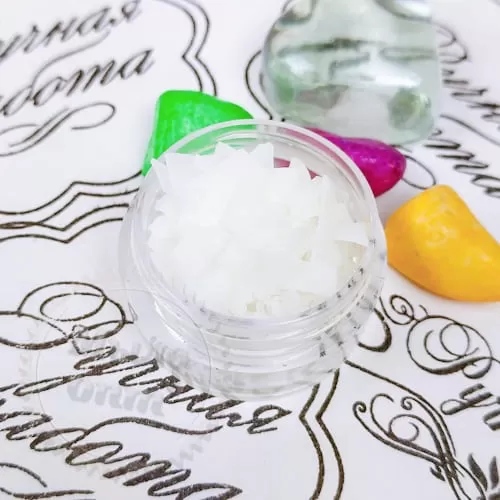
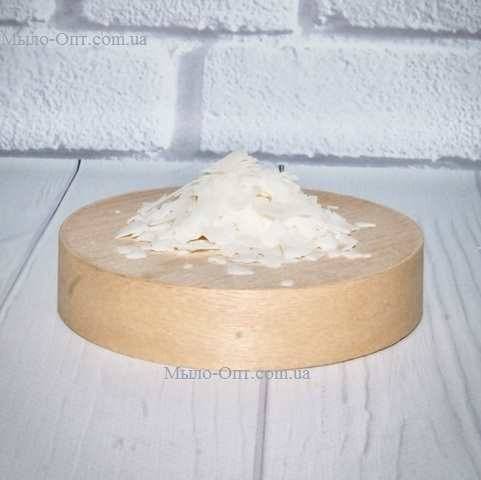




 Add to cart
Add to cart Buy in 1 click
Buy in 1 click

 Add a review
Add a review To favorites
To favorites To compare
To compare



